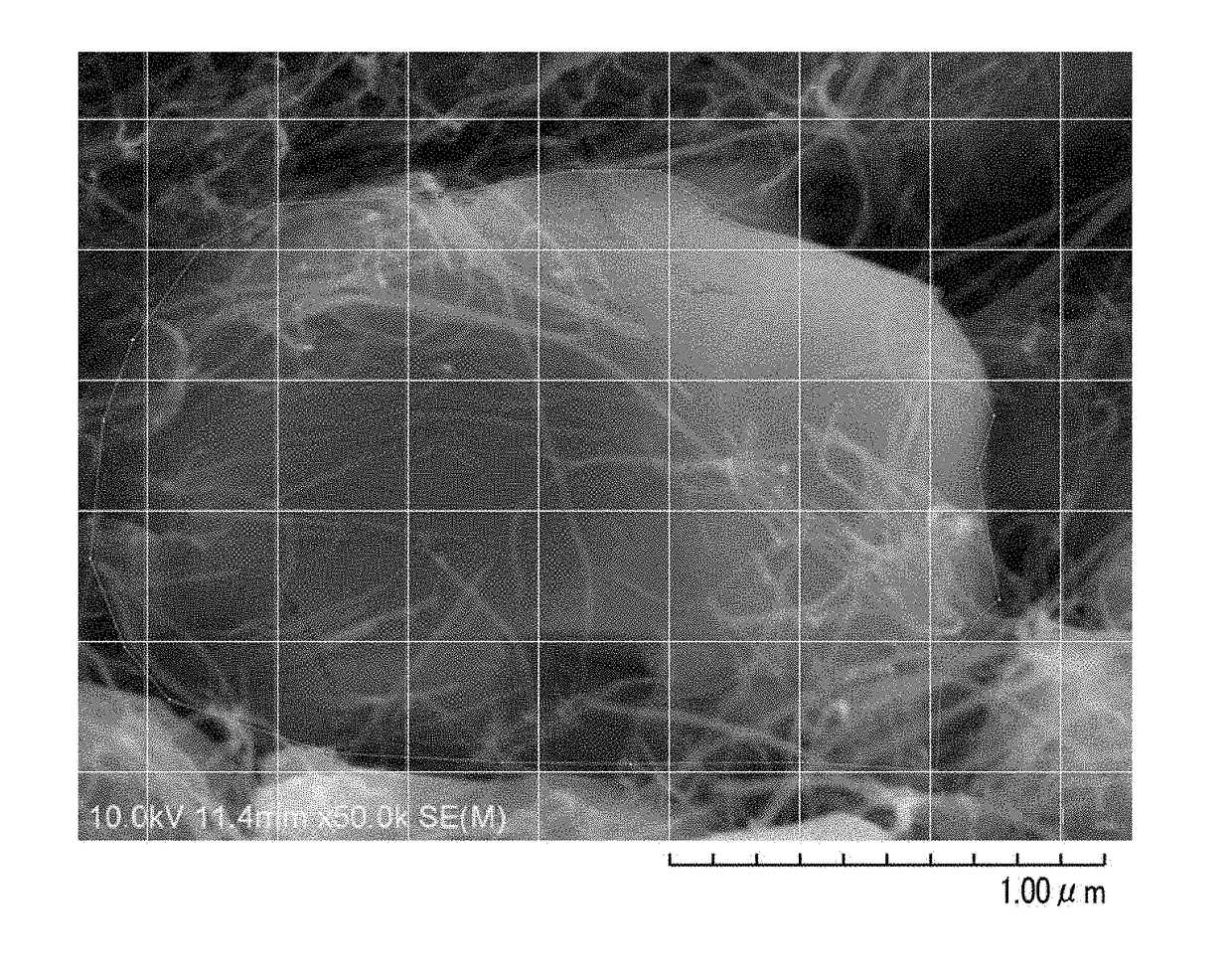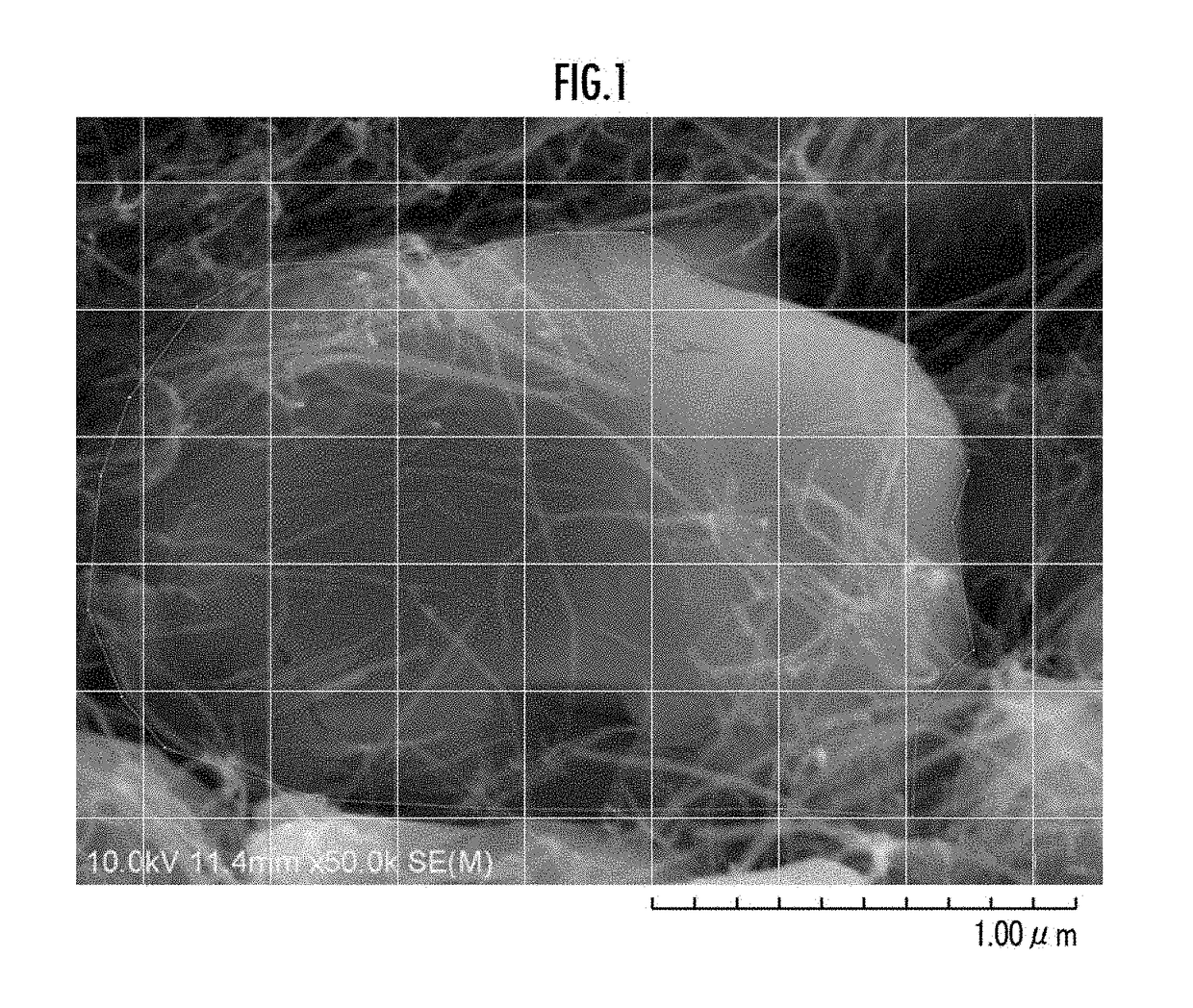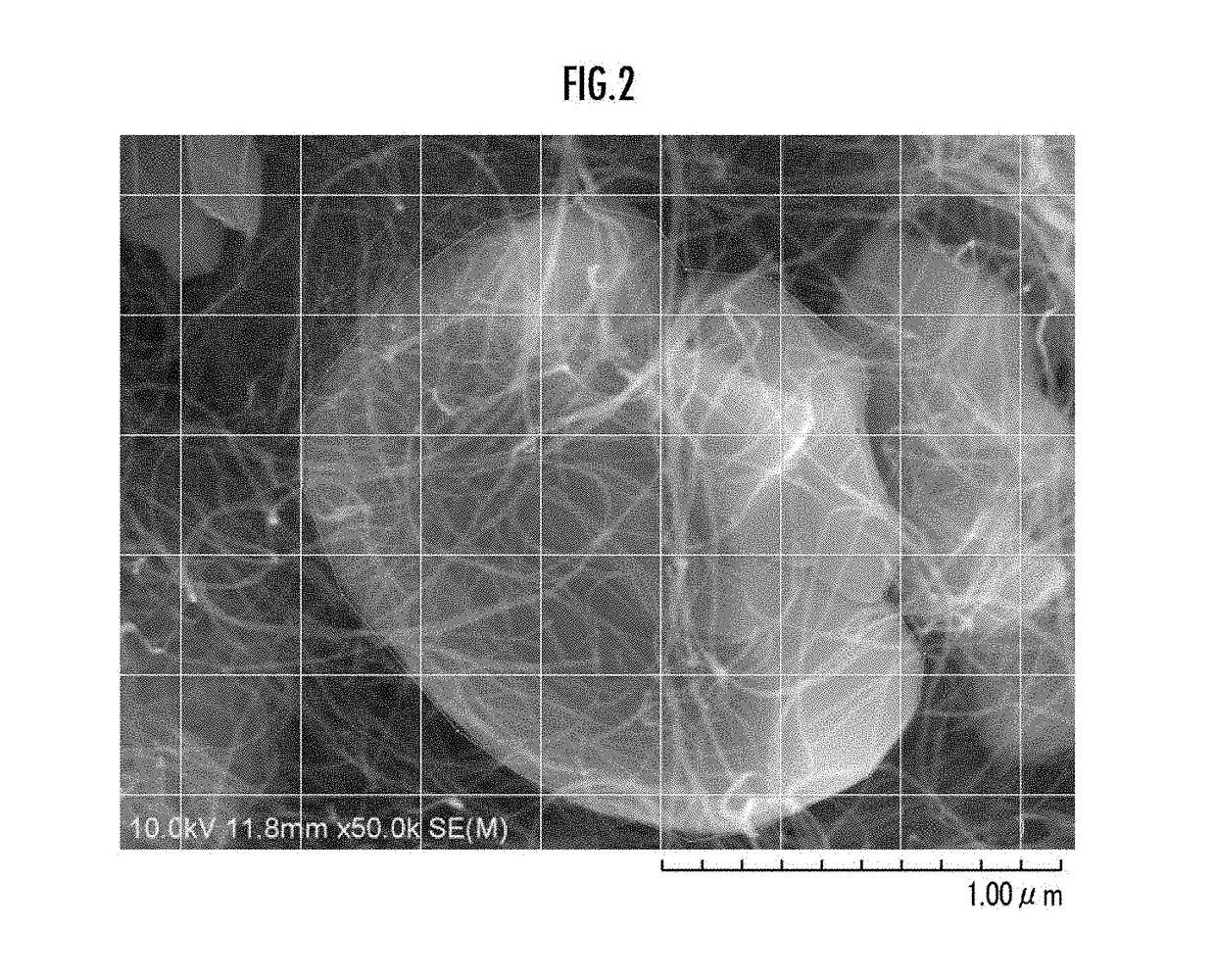Electrode mixture layer
a technology of electrode mixture and mixture layer, applied in the field of electrode mixture layer, can solve the problem of disadvantageous internal resistance and achieve the effect of reducing internal resistance and increasing output values and input values
- Summary
- Abstract
- Description
- Claims
- Application Information
AI Technical Summary
Benefits of technology
Problems solved by technology
Method used
Image
Examples
example 11
[0026]In the present example, first, 0.7 mg / ml of carbon nanotubes having a diameter of 0.8 to 1.5 nm and a length of 150 μm (manufactured by Meijo Nano Carbon Co., Ltd., product name: EC-15), 7.1 mg / ml of Li(Ni1 / 3Co1 / 3Mn1 / 3)O2 as a positive electrode active material, and 20 mg / ml of dodecyl lithium sulfate as a dispersant were placed in 150 ml of water and treated using an ultrasonic homogenizer at an output of 50 W for 60 minutes to prepare a primary dispersion liquid. In the primary dispersion liquid, the mass ratio between the carbon nanotubes and the positive electrode active material is 9:91.
[0027]The primary dispersion liquid was treated five times by a cross flow from a nozzle diameter of 100 μm and at a pressure of 200 MPa using a wet type atomizer NanoVater® manufactured by YOSHIDA KIKAI CO., LTD. to prepare a secondary dispersion liquid.
[0028]Next, the secondary dispersion liquid was placed in a suction filtration device to deposit a mixture of the carbon nanotubes and th...
example 2
[0038]In the present example, except that carbon nanotubes having a diameter of 10 to 50 nm and a length of 100 to 500 μm produced in accordance with the production method described in Japanese Patent Laid-Open No. 2016-031922, paragraph 0053 were used, a positive electrode-side electrode mixture layer for a secondary battery comprising a positive electrode active material and a conductor of carbon nanotubes in close contact with the surface of the positive electrode active material was obtained in the exactly same manner as in Example 1. A scanning electron micrograph of the surface of the electrode mixture layer of the present example is shown in FIG. 2.
[0039]In the electrode mixture layer of the present example, the number density of the carbon nanotubes determined from the scanning electron micrograph was 10.2 tubes / μm. The results are shown in Table 1.
[0040]Then, a secondary battery was produced in the exactly same manner as in Example 1 except that the electrode mixture layer ...
example 3
[0041]In the present example, except that the carbon nanotubes having a diameter of 8 nm and a length of 200 to 300 μm (manufactured by JEIO Co., Ltd., product name: JENO TUBE 8) were used, a positive electrode-side electrode mixture layer for a secondary battery comprising a positive electrode active material and a conductor of carbon nanotubes in close contact with the surface of the positive electrode active material was obtained in the exactly same manner as in Example 1. A scanning electron micrograph of the surface of the electrode mixture layer of the present example is shown in FIG. 3.
[0042]In the electrode mixture layer of the present example, the number density of the carbon nanotubes determined from the scanning electron micrograph was 13.8 tubes / μm. The results are shown in Table 1.
[0043]Then, a secondary battery was produced in the exactly same manner as in Example 1 except that the electrode mixture layer of the present example was used, and its internal resistance was...
PUM
| Property | Measurement | Unit |
|---|---|---|
| diameter | aaaaa | aaaaa |
| diameter | aaaaa | aaaaa |
| diameter | aaaaa | aaaaa |
Abstract
Description
Claims
Application Information
 Login to View More
Login to View More - R&D
- Intellectual Property
- Life Sciences
- Materials
- Tech Scout
- Unparalleled Data Quality
- Higher Quality Content
- 60% Fewer Hallucinations
Browse by: Latest US Patents, China's latest patents, Technical Efficacy Thesaurus, Application Domain, Technology Topic, Popular Technical Reports.
© 2025 PatSnap. All rights reserved.Legal|Privacy policy|Modern Slavery Act Transparency Statement|Sitemap|About US| Contact US: help@patsnap.com



